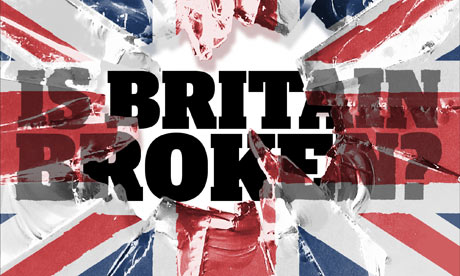
Intersections 2011 was a recent two-day conference at the Eden Project that explored the current trends driving business change and new opportunities for design practice. Over 200 delegates heard 45 experts, mavericks, entrepreneurs and thought leaders speak about key issues that are challenging businesses, public sector, and 3rd sector organisations.
Opening the conference, Jeremy Myerson, Professor of Design at RCA and Chair of the conference, began by looking back at the last Intersections conference in 2007. This was a similar event – a major UK design conference held a long period after any similar Design based conference. In 2007 the key message from the conference had been that the world had reached a watershed moment – and that complex times require designers with a greater repertoire. The key elements of this new design skillset was suggested as: –
- Designer as Business Strategist – leading change via Design Thinking to tackle big issues
- Designer as Co-Creator – rethinking the process to include wider disciplines and users to create more/better ideas
- Designer as Rationalist – providing hard, technical solutions – believing humans can solve the problems of the world
- Designer as Storyteller – Creating narratives that instill a vision of the future
It struck me that in 2011 Design Thinking has moved from theory into wider practice in the last 4 years. We still have the guru’s acting in the evangelist role for this school of thinking e.g. Professor Roger Martin of Rotman School of Management; Tim Brown, CEO of IDEO; and the UK Design Council. The public sector really has embraced design thinking and co-creation with some very successful results (DOTT Cornwall being an excellent example). However, large private sector companies seem to be getting left behind, and UK management schools seem to be lagging their North American and European counterparts in teaching the subject to future business leaders. This surprised me because in this post-economic-crisis period, large corporates and western governments have been promoting creativity and innovation as the way to re-invent western economies, and the way to compete against global competition e.g World Economic Forum, Davos, 2010 and 2011.
For me, the conference was inspiring, and six key themes emerged that I think will influence Business and Design over the next couple of years: –
1. ‘The world is at a NEW tipping point’.
4 years on from the last Intersections conference, and post economic crash, various speakers mentioned similar trends, including: –
- A shift towards social values – social revolution not technological revolution – the emergence of Purpose within organisations
- Public rejection of Capitalism and “Greed is Good” mentality
- Asset Stripping is unacceptable and unsustainable
- Fault-Lines are running through the world – creating ‘Wicked Problems’ (NB: this comment was made between the recent Egyptian uprising and the Japanese earthquake and Tsunami)
2. ‘No Straight Lines’.
Speaker Alan Moore of SMLXL captured this best, but again several speakers mentioned similar points of interest, including: –
- Literacy and shared language across design / management disciplines is a limiting factor
- Disruptive Innovations are making bigger impacts and embracing The Space / TheSystem / The Subjects
- Value of diversity – The roles of MBA / Doctor / Entrepreneur / Product Designer becoming intertwined in developing solutions
- There is no separate online or offline – only blended reality
- Industrial Model was straight line thinking – Networked Model is a labrynth
3. ‘The Age of Networks’.
Nick Jankel of WeCreate introduced this theme on day one of the conference, but again other speakers referred to and returned to the subject, and key points included:-
- Development of collaborative network tools – Cloud Apps
- Networked Innovation is growing – within and across organisations
- Collaboration IQ is becoming an important measure of performance
- Collaboration across bigger networks is harder – but the results are bigger
- Public / Private / 3rd Sector providers need to collaborate to solve the most complex problems in society
- Use of Open Source and Creative Commons copyright is growing
4. ‘Visualisation’
Linked in many ways to the other key themes, speaker David McCandless championed the use of infographics and data visualisation to explore new directions for journalism and design. His talk demonstrated new ways that technology is enabling the presentation of data to support an argument. This is a key area where design can help management to ‘tell the story’ and create a vision for audiences. Key points in this theme included: –
- Quantitative Information can be very interesting if presented well
- Infotography – a new form of investigative journalism based on data trawling
- Data is the new soil…
- Visualisation supports the designer as storyteller model
5. ‘Nudge by Design’.
In his talk at the end of day one, David Kester – CEO of UK Design Council described how ‘nudge’ is growing as a discipline used to influence decision making, and referred to the recent book ‘Nudge – Improving Decisions about Health, Wealth and Happiness’ by authors Thaler and Sunstein. Key points he mentioned include: –
- Designers do this for a living – via providing Insights & Ideas Generation
- ‘There is something in this Co-Design methodology’
- ‘Hug a Politician’ i.e. gain political influence for your programmes
6. ‘Rethinking the Future’.
Speaker Josephine Green led in promoting this subject, but other speakers and the chairman referred to it as well, and it is probably the biggest take-away from the conference for most delegates. In this theme the following comments made the biggest impact with the audience: –
- The world is in need of inspiring stories – The ability to tell them can be our greatest asset
- There seems to be a British horror of the abstract, big-picture, strategic, philosophical thinker
- We are moving from the hierarchical model of the industrial era towards the pancake model of the socio-ecological era
- Social solutions and innovation are the challenges of our time – health; education; mobility
In summary, I think that Intersections 2011 was a very inspirational and important conference. The venue was superb – both practically and inspirationally. The speakers were excellent – thought provoking, entertaining and inspirational. The audience was an interesting mix of local, national and international visitors. But perhaps the biggest disappointment and surprise was that there were not more private sector and big corporate delegates at the meeting. I believe that they have most to gain from adopting Design in the broader context of creativity and innovation that this conference presented. Maybe this lack of representation was due to event promotion that seemed to be focused on the design community – attracting independents, academics and students from within the discipline of Design – but not the CEO’s of the corporate world. Perhaps therein lies another opportunity, to take this message to a more influential audience – taking the key themes from Intersections11 and translating them into a language that the corporate/business audience can identify with more readily?
Note: The conference proceedings were recorded on video and should be made available to the public via the Intersections website shortly. For more info see: http://intersections2011.com
The first Intersections 2007 conference was recorded and podcasts from keynote sessions can be accessed via iTunes: –http://itunes.apple.com/us/podcast/intersections-podcast/id268553975
Why not contact us to explore how to approach these 6 key themes within your business / organisation?
James Rock – MD and Chief Business Designer, CULTIVAR Consulting


















